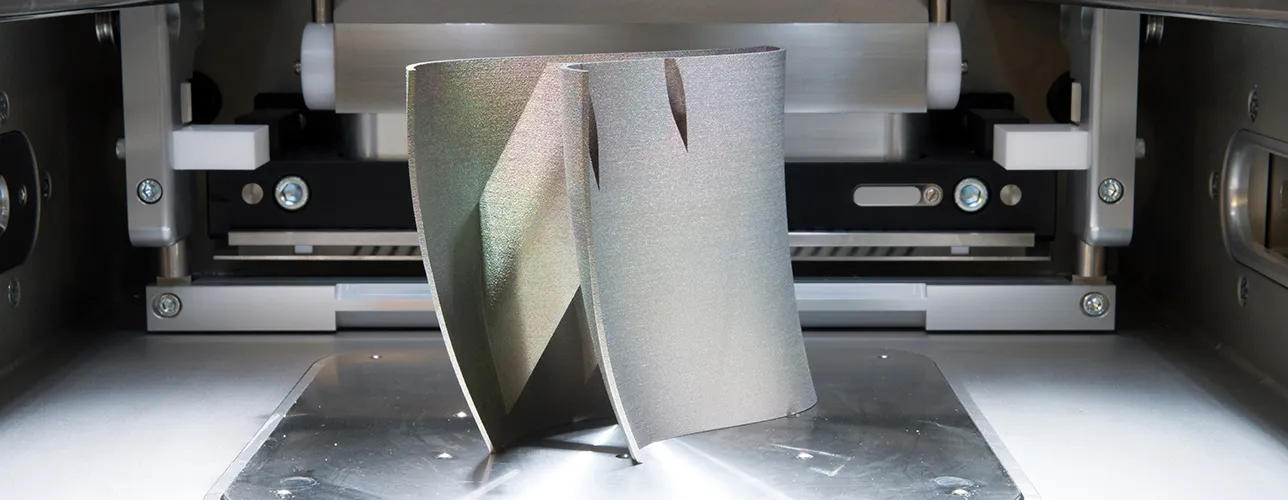“Some software solutions for protecting IP in additive manufacturing involve using blockchain technology for auditing the life history of designs and parts,” said Pamela Joslyn, senior software developer, DNV GL. “This can create an immutable register of what the part is. Other software detects if someone is trying to print a counterfeit product. Artificial intelligence and its subset, machine learning, can also help in this area.”
Some OEMs foresee themselves being rewarded for their designs by receiving royalties for each part printed and/or sold, said Kandukuri: “However, some end users tell us that when they buy equipment they also want to receive design files for spare parts. They hope it would mean them not having to rely in all cases on supply chains set up by OEMs.”
Early interest is evident among oil and gas operators
Adoption of additive manufacturing is in its infancy in the oil and gas industry. BP, Shell and Woodside are among the widely cited, but as yet few, oil and gas operators pioneering its usage.
“The industry has traditionally been conservative in the speed with which it will adopt new technologies,” noted Le Gallo. “However, the new oil price era, and the competitive and regulatory forces in the energy transition mean the industry needs to keep raising its efficiency and competitiveness through technological innovation.”
Additive manufacturing presents an opportunity to do that, he suggested. “Oil and gas sector companies can shape the technology to their purposes as they begin to adopt it, while learning from each other and other industries. Aerospace is quite advanced in this regard. Others, such as maritime, are also beginning the journey, and their experiences will have synergies with those of oil and gas, with which they overlap in the offshore context.”
New collaborative project evaluates additive manufacturing
Illustrating Le Gallo’s point, a programme studying the feasibility of the technology in the maritime industry is underway, with DNV GL leading the research at the company’s Global Additive Manufacturing Technology Centre of Excellence in Singapore. The joint industry project (JIP) will see DNV GL and 15 member companies of the Singapore Ship Association collaborate to see how printing spare parts can help the capital-intensive maritime industry cut costs and downtimes.
In another development, DNV GL and Singapore’s Nanyang Technological University have signed a four-year research collaboration agreement, supporting academic advances in additive manufacturing for the oil and gas, maritime, and other industries.
A further 18 companies are involved in JIPs managed from DNV GL facilities in Norway, which have as their aims the development of a guideline and accompanying economic model to facilitate adaptation of 3D-printed functional metal parts for oil and gas, and maritime industries.
Building trust in additive manufacturing
Issues of trust remain key to additive manufacturing gaining acceptance. For example, the lack of a systematic qualification process, standards, and specialized knowledge of additive manufacturing towards qualification and certification of printed components and materials.
Through its various Singapore facilities, and its global network of laboratories and experts in various sectors, DNV GL is addressing this:
In 2017, it published the first-ever guideline to help manufacturers, suppliers, and end users of materials, parts, components and related services to confidently adopt additive manufacturing technologies in the oil and gas, and maritime industries.
In 2018, it released the first Approval of Manufacturer scheme for additive manufacturing producers wishing to supply products that comply with DNV GL’s rules and standards.
In June 2019, it published a class programme specifying requirements that manufacturers need to comply with to obtain, maintain, and renew DNV GL’s Type Approval certificate for manufacturing of metal powder and wire feedstock, intended for products made by additive manufacturing.
Additive manufacturing offers huge savings to oil and gas companies
While additive manufacturing is in its infancy in the oil and gas industry, the potential rewards convince analysts that demand will develop rapidly. Market researchers SmarTech Publishing forecast that additive manufacturing by printing will become a USD450 million market in the oil and gas industry by 2021, and USD1.4 billion by 2025.1
“The pay-off for operators and OEMs will be enormous once hurdles are overcome. The challenge now is to get everyone talking and looking at how to ensure that everyone benefits from this promising manufacturing technology. The JIPs that we are involved in and are planning through the Singapore facility aim to do just that,” Le Gallo concluded.
References
- ‘Additive manufacturing opportunities in oil & gas markets 2017: An opportunity analysis and ten-year forecast’, SmarTech Publishing, Report # SMP-AM-OG-2017-112017, Publ. 14 November 2017.



